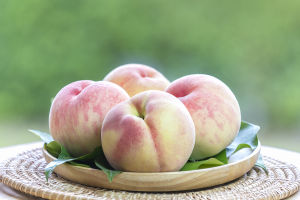Ice cream is a delicious dessert that particularly captivates people in the summer.
The variety of ice cream flavors is staggering, each with its unique charm and characteristics, making the diversity of the ice cream world truly astounding.
1. Liquid Nitrogen Ice Cream
Liquid nitrogen ice cream involves pouring liquid nitrogen into a stirred ice cream mixture, instantly freezing it to minus 196 degrees Celsius.
Why does it happen this way? Because under normal atmospheric pressure, liquid nitrogen cannot maintain its liquid state; it vaporizes, absorbs heat, and rapidly solidifies the ice cream mixture.
Molecular gastronomy has been quite popular in recent years, and liquid nitrogen ice cream is one of its manifestations. Since the entire process involves molecular-level physical changes, its texture is extremely smooth, without any icy residue.
2. Shaved Ice
Unlike other ice creams, shaved ice does not involve any stirring during the freezing process. Instead, it is frozen into blocks and then shaved into thin layers using a special ice shaver, which is then stacked layer by layer. Because the layers are very thin, the texture is dense and it melts in the mouth.
3. Granita
Its ingredients are the same as sorbet, but unlike shaved ice, there is no stirring involved. Instead, it is frozen in a flat pan and then scraped off bit by bit. Generally, granita contains more ice crystals, resulting in a rougher texture.
4. Ice Manias
Authentic ice manias originated in Thailand and are a highly popular dessert there.
With word of mouth spreading among tourists from various countries, it is gradually becoming popular worldwide. You might wonder how ice cream can be fried. Simply put, the stovetop beneath the iron plate is replaced with a refrigeration unit for frying.
5. Gelato
The main differences between gelato and regular ice cream lie in fat content, air content, and temperature. Italian gelato has a lower fat content, typically around 3.8%, because it contains less cream and more milk in its recipe.
Therefore, eating gelato is relatively less likely to lead to weight gain. Due to its slow churning speed, Italian gelato has lower air content, resulting in a denser texture compared to regular ice cream. Despite the lower fat and air content, Italian gelato is still very creamy. This is because it is stored at a higher temperature than regular ice cream. Therefore, most gelato in supermarket freezers is actually just ice cream dressed up as gelato.
6. Soft-Serve
The soft-serve ice cream we often get in fast-food restaurants, squeezed onto cones from machines, is generally soft-serve. From an ingredient perspective, soft serve is essentially the same as ice cream, but it contains more air, making it lighter and softer.
To prevent the formation of ice crystals, soft serve is actually frozen at the moment it is sold. When the staff starts operating the machine, the ingredients in the machine, along with a certain amount of air, enter the freezing chamber to be mixed and rapidly frozen. Because most of the work is done by machine, fast-food restaurants mostly sell this type of ice cream.
7. Frozen Yogurt
Frozen yogurt, as the name suggests, is ice cream primarily made from yogurt, with a texture and taste closer to ice cream. Because yogurt is used, the fat content is generally lower, and it may contain lactic acid bacteria (but not necessarily live). It may have a slightly sour taste, especially the plain variety.
Frozen yogurt on the market is generally less sweet than regular ice cream. For those who don't like overly sweet desserts, frozen yogurt is worth a try. Frozen yogurt can be made in various textures and flavors, and toppings such as fruit, chocolate, cookies, candies, and syrups can be added on top.
In the scorching summer, no matter where you are, a cup of ice cream can bring a lot of coolness and happiness. Let us indulge in the sweetness of summer in the world of ice cream and feel the beauty of life.


